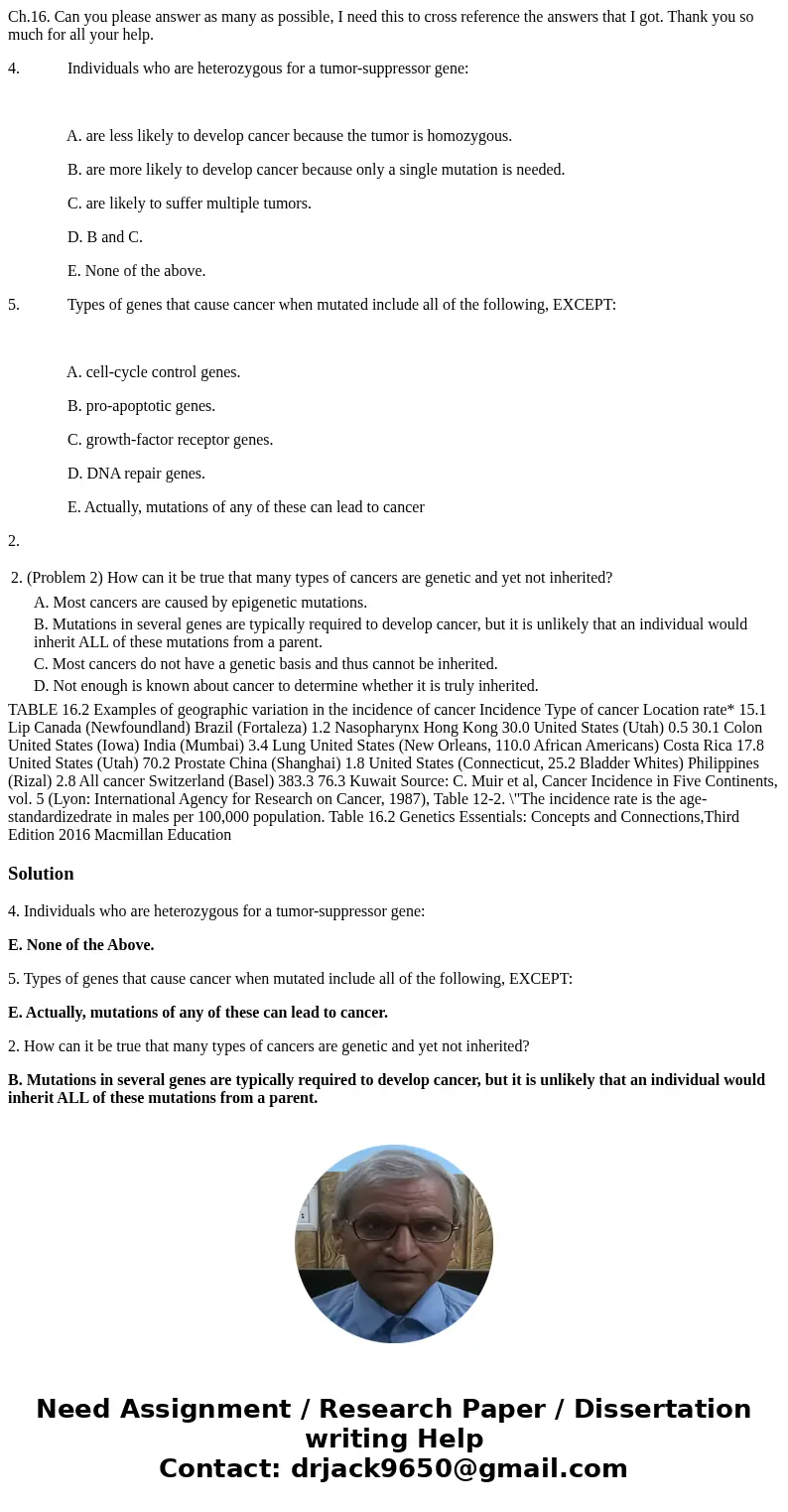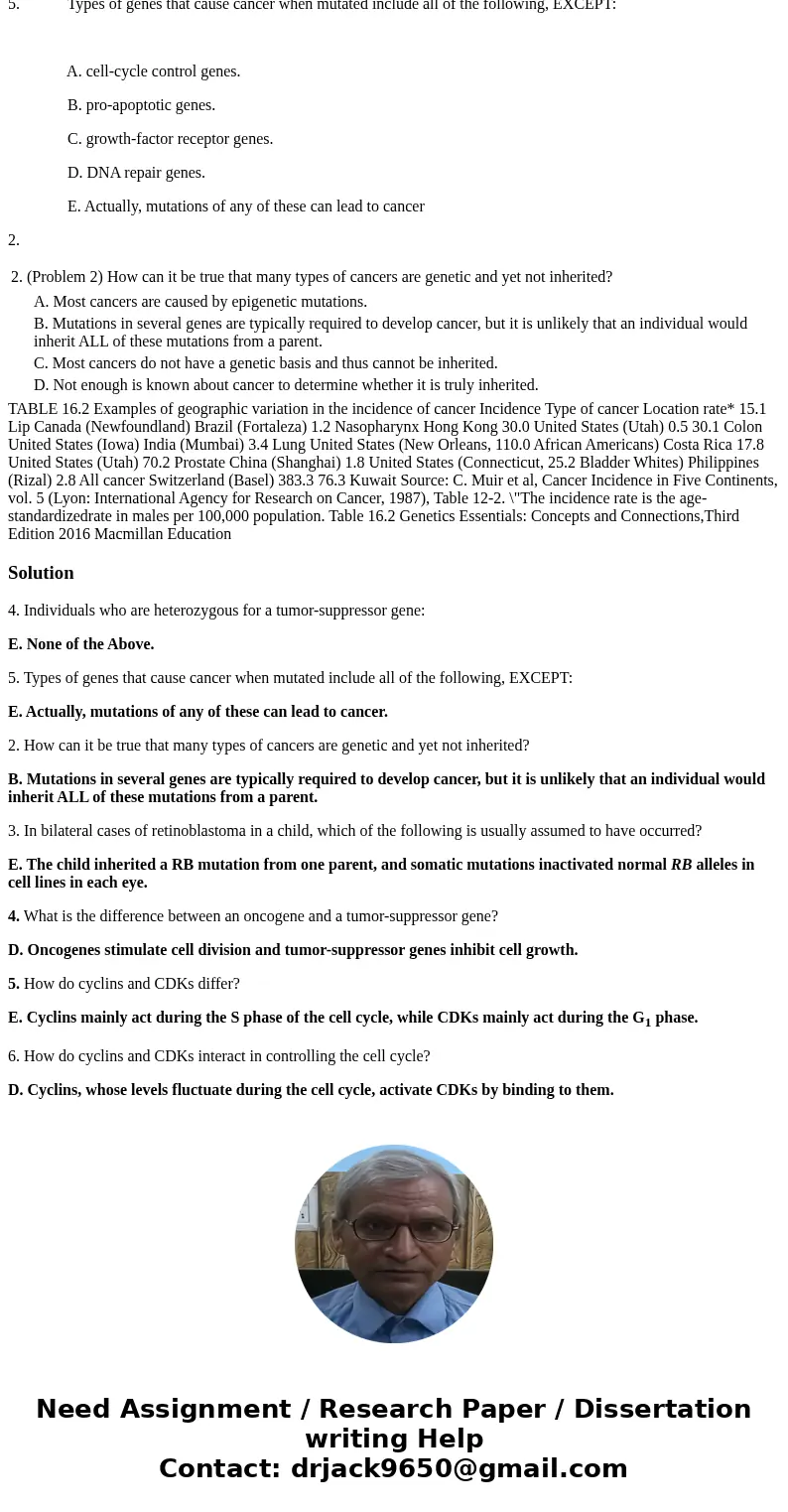Ch16 Can you please answer as many as possible I need this t
Ch.16. Can you please answer as many as possible, I need this to cross reference the answers that I got. Thank you so much for all your help.
4. Individuals who are heterozygous for a tumor-suppressor gene:
A. are less likely to develop cancer because the tumor is homozygous.
B. are more likely to develop cancer because only a single mutation is needed.
C. are likely to suffer multiple tumors.
D. B and C.
E. None of the above.
5. Types of genes that cause cancer when mutated include all of the following, EXCEPT:
A. cell-cycle control genes.
B. pro-apoptotic genes.
C. growth-factor receptor genes.
D. DNA repair genes.
E. Actually, mutations of any of these can lead to cancer
2.
| 2. | (Problem 2) How can it be true that many types of cancers are genetic and yet not inherited? | ||||||||
|
Solution
4. Individuals who are heterozygous for a tumor-suppressor gene:
E. None of the Above.
5. Types of genes that cause cancer when mutated include all of the following, EXCEPT:
E. Actually, mutations of any of these can lead to cancer.
2. How can it be true that many types of cancers are genetic and yet not inherited?
B. Mutations in several genes are typically required to develop cancer, but it is unlikely that an individual would inherit ALL of these mutations from a parent.
3. In bilateral cases of retinoblastoma in a child, which of the following is usually assumed to have occurred?
E. The child inherited a RB mutation from one parent, and somatic mutations inactivated normal RB alleles in cell lines in each eye.
4. What is the difference between an oncogene and a tumor-suppressor gene?
D. Oncogenes stimulate cell division and tumor-suppressor genes inhibit cell growth.
5. How do cyclins and CDKs differ?
E. Cyclins mainly act during the S phase of the cell cycle, while CDKs mainly act during the G1 phase.
6. How do cyclins and CDKs interact in controlling the cell cycle?
D. Cyclins, whose levels fluctuate during the cell cycle, activate CDKs by binding to them.


 Homework Sourse
Homework Sourse